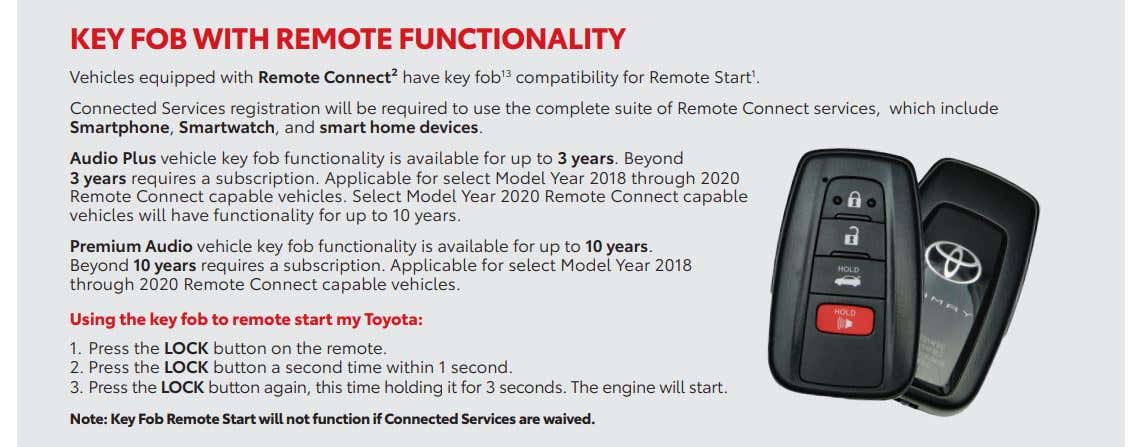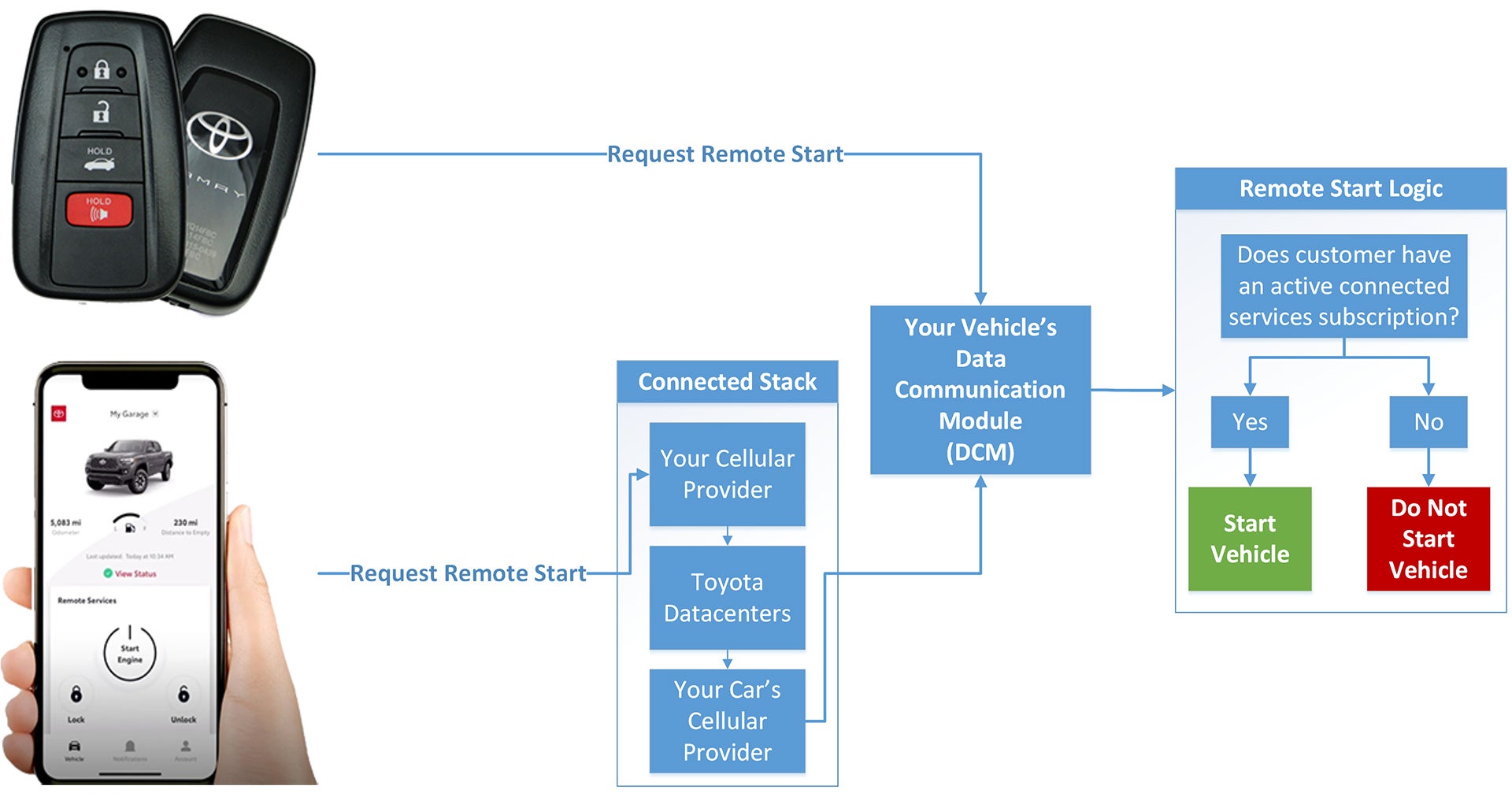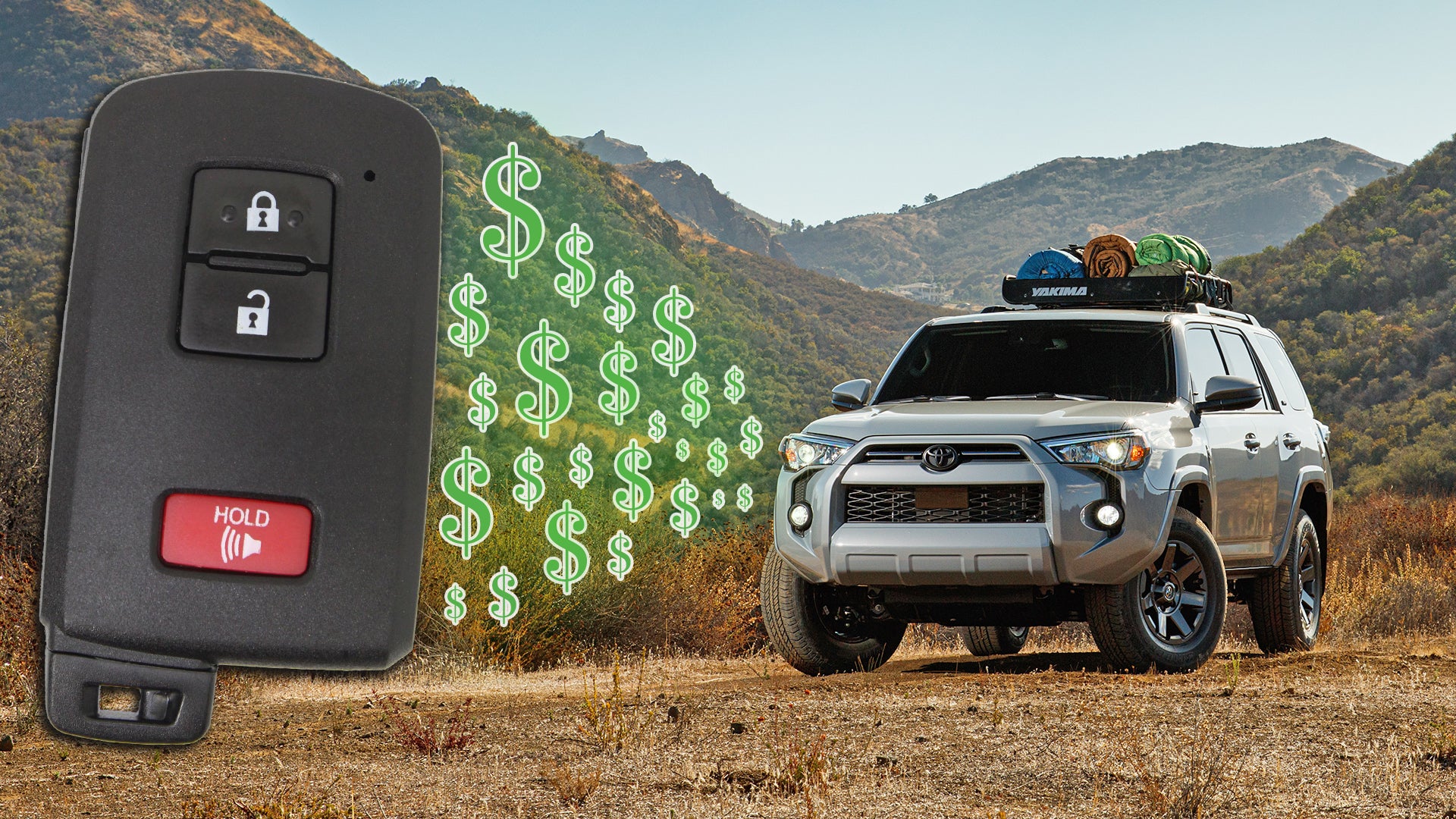Earlier this month, we broke a story about Toyota locking its key fob remote start function behind a monthly subscription. If owners of certain models aren't actively enrolled in a larger Toyota connected services plan, the proximity remote start function on the fob—that is, when you press the lock button three times to start the car while outside of it—will not work even though it sends the signal directly to the car. Obviously, this sent people into a frenzy whether they own a Toyota or not, because it was seen as a dark harbinger of the perils of fully-connected cars. Automakers now have the ability to nickel and dime people to death by charging ongoing subscription fees for functions that used to be a one-and-done purchase, and it looked like Toyota was hopping on the bandwagon.
At the time, Toyota declined to give us a detailed answer on why it chose to take a feature that doesn't need an internet connection to function and moved it behind a paywall. Today, we've got answers. Toyota now claims it never intended to market the key fob remote start as a real feature, and it also says the subscription requirement was an inadvertent result of a relatively small technical decision related to the way its new vehicles are architectured. Finally, Toyota has heard the outrage over the last week—a spokesperson told us the company was caught off guard by the blowback—and its executive team is currently examining whether it's possible to reverse course and drop the subscription requirement for key fob remote start.

Assuming a driver has a subscription or active trial to Toyota's Remote Connect plan—one of several in its suite of connected service offerings that add things like owner smartphone apps, automatic emergency calling and more—they can perform a remote start a few different ways. One is by using the app on their phone, another is a connected service like Amazon's Alexa, and the third is by using their proximity key fob. But no matter which method is used, the command must always flow through what's called the vehicle's data communication module (DCM).
The DCM is the piece of hardware in cellular-equipped Toyotas that facilitates the car's connected services. It also contains a bit of software logic, according to Toyota, that checks whether or not the customer has an active subscription or trial to connected services. The DCM is programmed in such a way that the remote start is either enabled or disabled—a one or a zero, on or off. This means that if the driver attempts to start the car using a key fob, the request is first sent to the DCM for approval and denied if there is no active subscription or trial, even if it's coming from the proximity key fob and not running through the larger cellular network. The diagram below is a useful visual explanation:

So that explains how Toyota ended up in this spot. Less clear is the why. Toyota now says that lumping the key fob remote start into the subscription service wasn't "intentional;" a spokesperson told us that the majority of Toyota employees were unaware of this setup and caught off guard by our first story. Further, it claims that the key fob remote start function as it exists today (pressing the lock button three times) is more like an unofficial user hack that Toyota no longer advertises, hence the lack of a separate remote start button on the fob—and evidently its surprise at the blowback our initial report generated.
"The subscription truly is for the app," a Toyota spokesperson told The Drive. "The key fob remote start was never intended to be a cost item either at the time of purchase or through subscription."
So while you can triple-click the lock button to request a remote start, it's not actually something you're supposed to do in Toyota's view. The spokesperson pointed out that Toyota's marketing material and owner's manual for affected vehicles don't advise drivers to use the key fob to remote start their vehicle. Sure enough, that's true. But that explanation also throws dealers under the bus.
Many salespeople, such as the one in the video above, have been teaching this trick to customers as if it were an official method of starting their vehicle. And it's also not immediately clear when watching most of these how-to videos that a subscription or trial to connected services is required for it to work. Depending on what type of infotainment system is equipped, a Toyota connected services trial could last anywhere between three and 10 years. As more Toyota customers' connectivity trials come to an end, some may notice their remote start function isn't working, bringing Toyota's unintentional design to light.
Frankly the idea of this being an unintentional move is hard to process at first—multibillion-dollar enterprises rarely do things without intention. The more charitable (and sensible) analysis is that Toyota planned to sunset its key fob remote start feature, but started the process of doing so without communicating it properly or taking an accurate read of owner demand. The change in vehicle architecture was put in place over three years ago and the ability of MY2018 and older vehicles to use the key fob's remote start function reportedly had nothing to do with the upcoming sunset of 3G cellular networks—although the timing is oddly coincidental. As a reminder, Toyota previously told The Drive that it would not be offering a retrofit for affected vehicles.
It's not immediately clear if Toyota can—or will—change the DCM's behavior to separate requests from a key fob or connected app. Toyota said its executive team is aware of our initial report and is actively working to determine if it is technologically feasible to separate the fob start from the DCM. But regardless of the automaker's eventual decision, we now at least know how such a simple feature came to be a dreaded subscription-based service.
Got a tip or question for the author? Contact them directly: [email protected]









